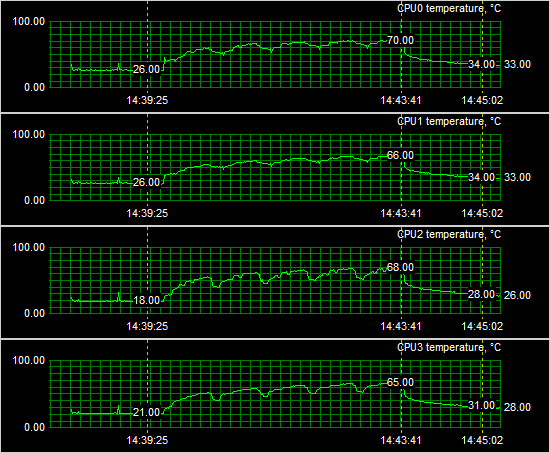Page 3 - Specs Continued & Thermals
No, the one very distinct difference is this, the FSB (Front Side Bus) is clocked much higher at 1600 MHz.
When you compare it to the previous generation products the L2-cache has been increased significantly. For dual-core processors you'll see a move from 4 towards 6MB. The new Penryn quad core processors have gotten a lovely upgrade from 8 towards 12 MB L2 cache. Intel also added the long awaited instruction set SSE4 which in the future will guarantee a huge speedup for a good number of multi-media applications. Think here in en/decoding DiVX in HD and what not compression wise ?
Now you need to understand that the small 200 MHz (6.7%) increase is nothing ground breaking. The 1600MHz FSB on the other hand is rather massive as very few mainboard chipsets actually support this FSB. In fact, not one does officially offer support. Intel's X38 chipset however should be able to run it nicely. And at NVIDIA's latest Editor's day at the San Francisco HQ NVIDIA stated that 780i mainboard will have full Penryn support as well. Until then, it's really a matter of overclocking your chipset.
Expensive, oh dear yes very much. Since Intel now has multiple high-end quad core CPU's in it's line, they tried to avoid hurting the QX9650 sales. This codename Yorkfield QX9770 processor will actually carry a price tag higher than $1000 when it arrives in Q1 2008.
Let's have a look at product segmentation; expect the QX9770 to come in at a harsh 1400 bucks, likely a little lower in e-tail here and there. Now I for a fact wish that AMD had a 3GHz Phenom processor available as that would have driven the high-end prices down significantly. Where there's no competition, prices are kept high.
What will happen in the weeks to come ? Have a look at the chart below for an overview of upcoming Penryn processors.
|
TBA Penryn Family processors |
|||||||||||||||||||||||||||||||||||||||||||||||||||||||||||||||||||||||||||||||||||||||||||||||||||||
|
|||||||||||||||||||||||||||||||||||||||||||||||||||||||||||||||||||||||||||||||||||||||||||||||||||||
A Quad Core QX 9770 Thermal Envelope
So with the help of our home-grown Rivatuner we were curious how temperatures hold on the new processor. Initial reviews where showing some alarming results which I'm afraid I have to confirm. Our test has been done with an Intel stock cooler (the ones supplied with the processor).
So what we did is simple, we looped a 4-core SMP threaded processor stress test. So all four CPU cores are activated and stressed 100%. It's a lot of heat for the processor to get rid of, especially on a 1600 MHz FSB.
As you can see the idle temps are just fine. But the load temperatures tend to get a tad high and reported back with a peak of 73 Degrees C (163 Farenheit).
|
QX9770 Thermal envelope |
||
 |
||
Enough tech chatter. Let's have a peek at the actual CPU followed by some tests we ran.
